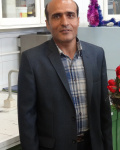| نویسندگان | مسعود صلواتی-سید مصطفی حسین پور مشکانی-فاطمه مهندس |
|---|
| نشریه | J MATER SCI-MATER EL |
|---|
| تاریخ انتشار | 2015-7-01 |
|---|
| نمایه نشریه | ISI |
|---|
چکیده مقاله
Abstract This investigation reports synthesis of CuInS2
nanoparticles with the aid of (1,8-diamino-3,6-dioxaoctan)copper(II)
sulfate ([Cu(DADO)]SO4), bis(propylenediamine)copper(II)
sulfate ([Cu(pn)2]SO4) complexes, and
thiosemicarbazid in the presence of microwave irradiation.
Besides, sodium dodecyl sulfate and propylene glycol are
used as capping agent and solvent, respectively. In this
method, microwave irradiation creates the activation
energy for dissociation of the precursors and leads to the
CuInS2 nanoparticles formation. The effect of preparation
parameters such as microwave power, irradiation time, and
type of copper precursor on the particle size of products is
studied. XRD results indicate that pure tetragonal phase
CuInS2 can be only obtained after annealing at 400 C for
2 h in a gas mixture of 85 % Ar and 15 % H2. SEM images
show that with decreasing the microwave power and irradiation
time, particle size of CuInS2 nanoparticles
decrease. On the other hand, the particle sizes of CuInS2
nanoparticle synthesized by [Cu(pn2)]SO4 are lower than
that of [Cu(DADO)]SO4 due to its further more steric
hindrance effect. Additionally, the photovoltaic measure-
ments of the products show that the efficiency of the
